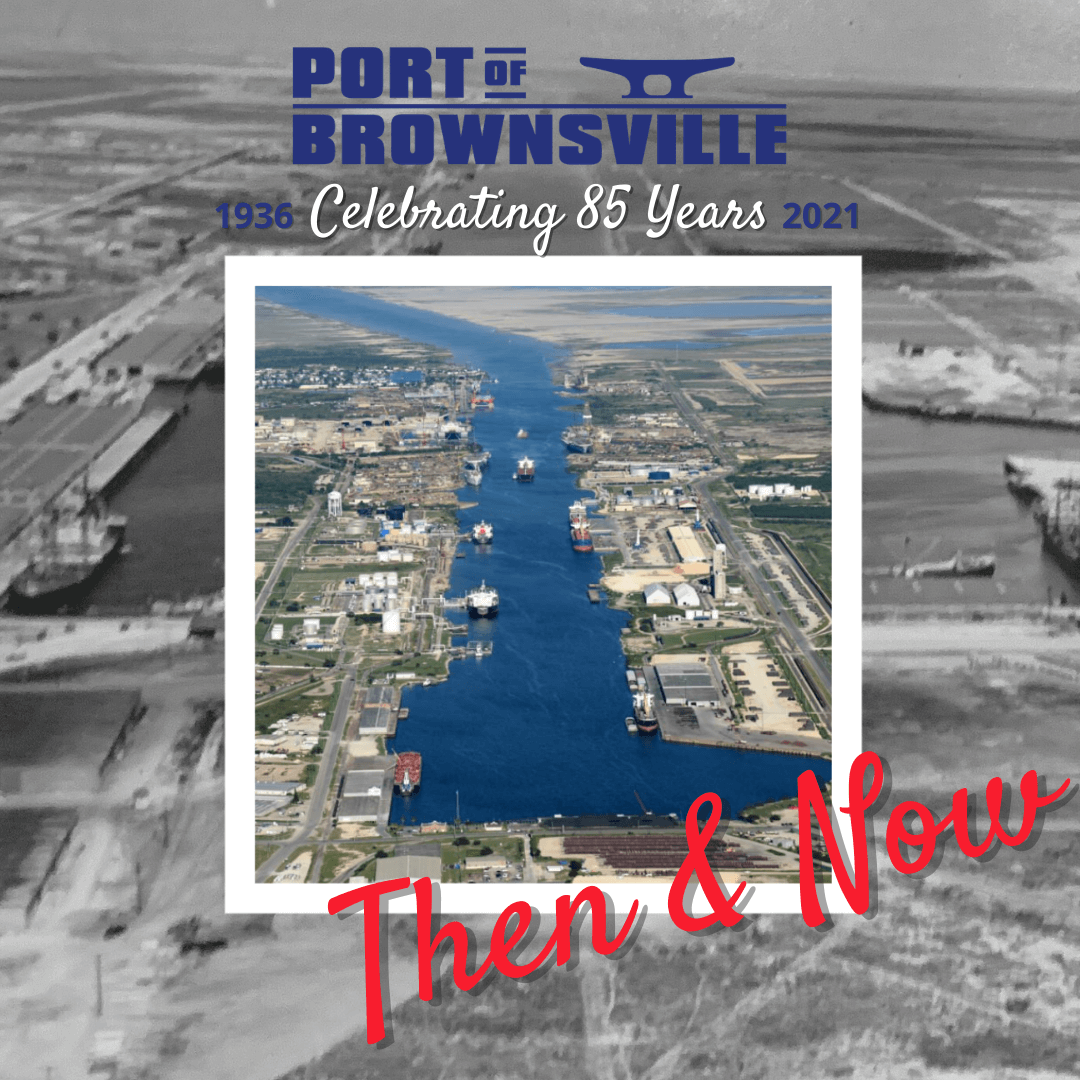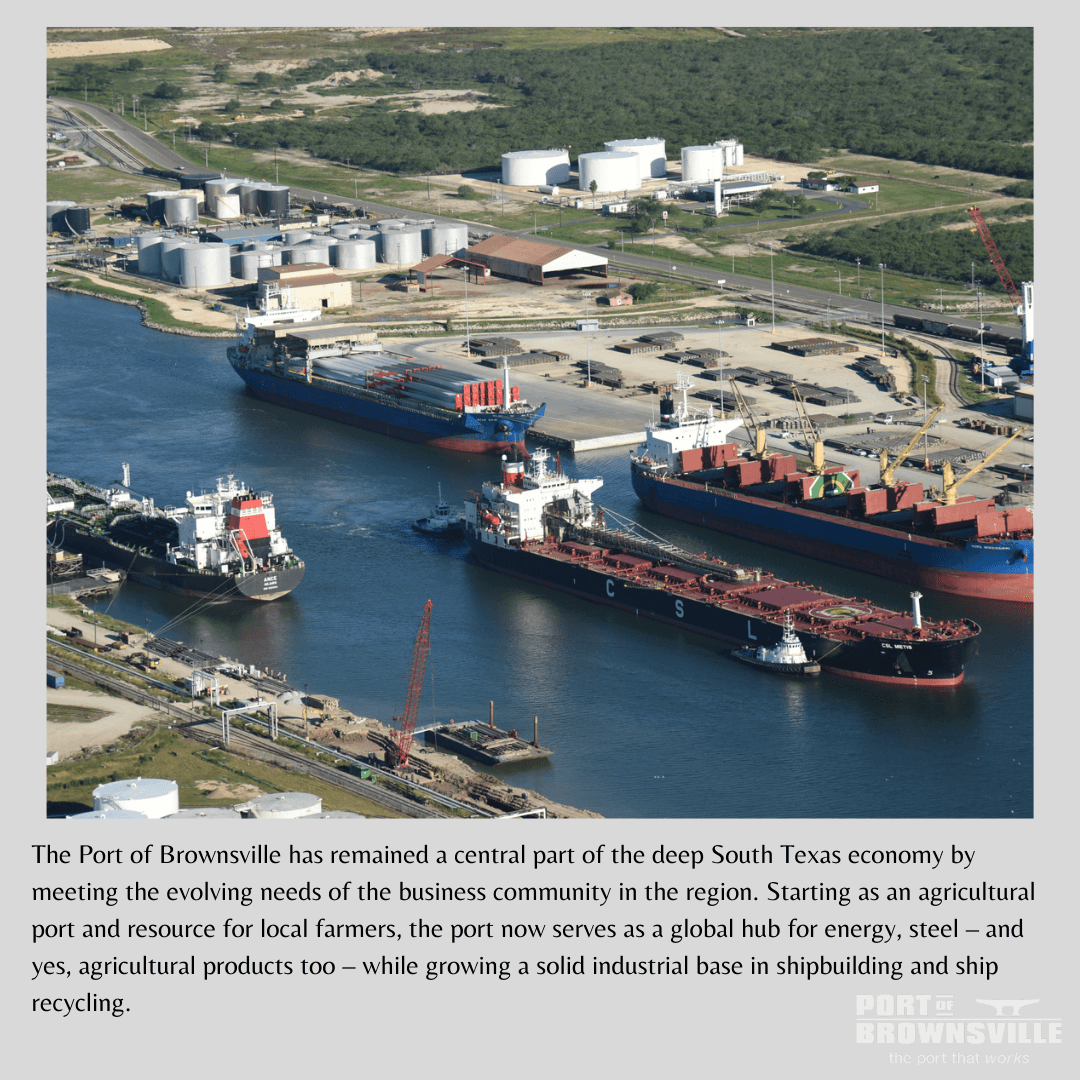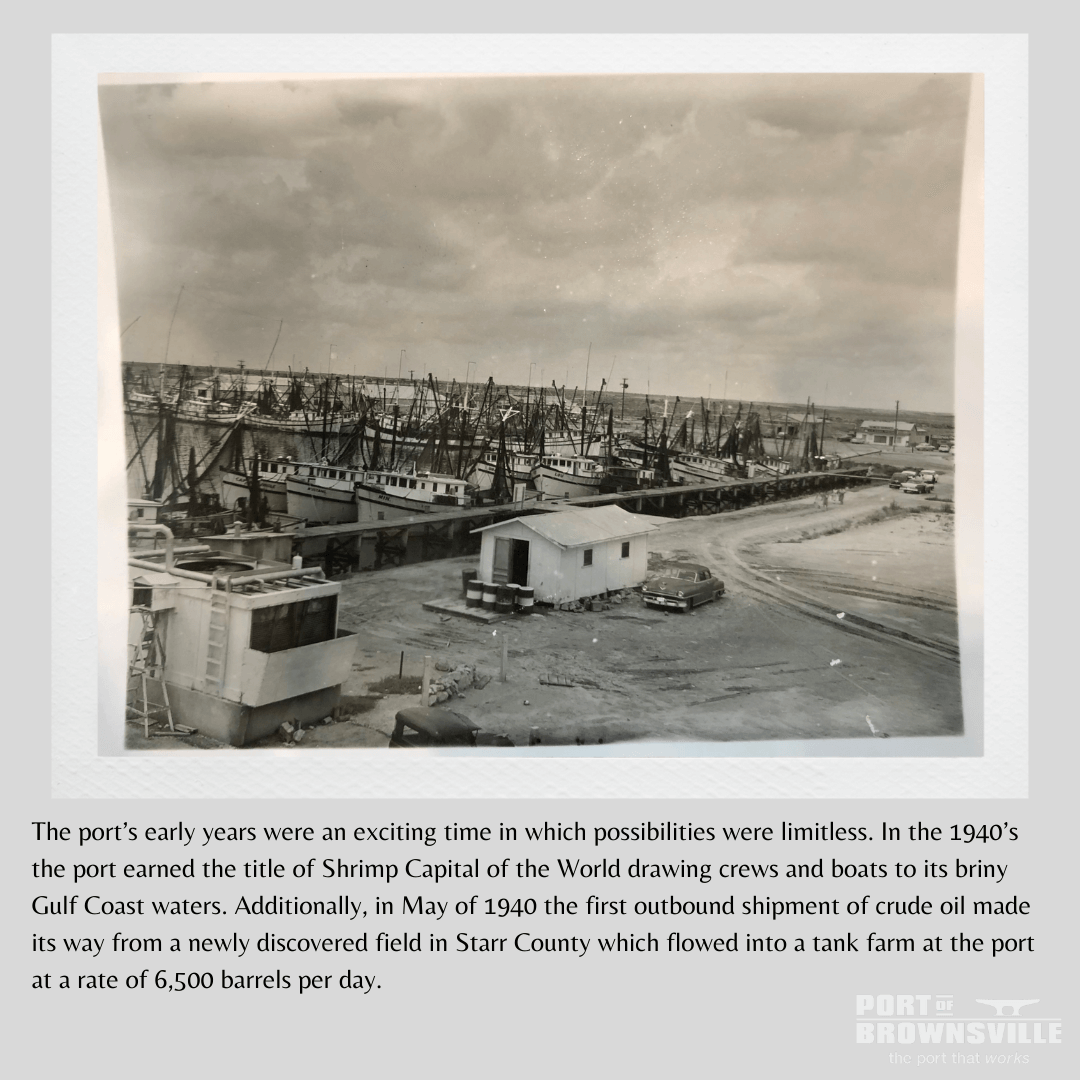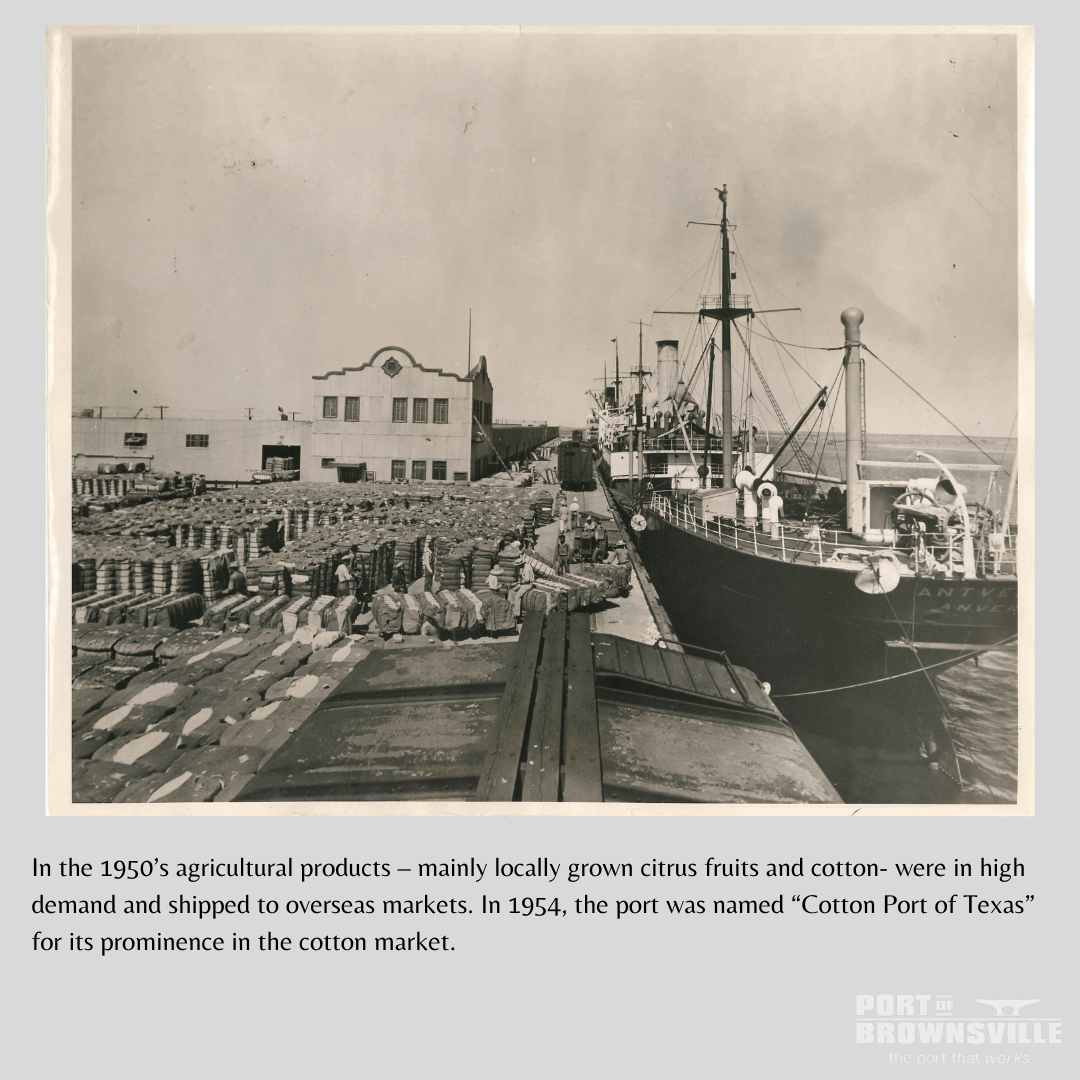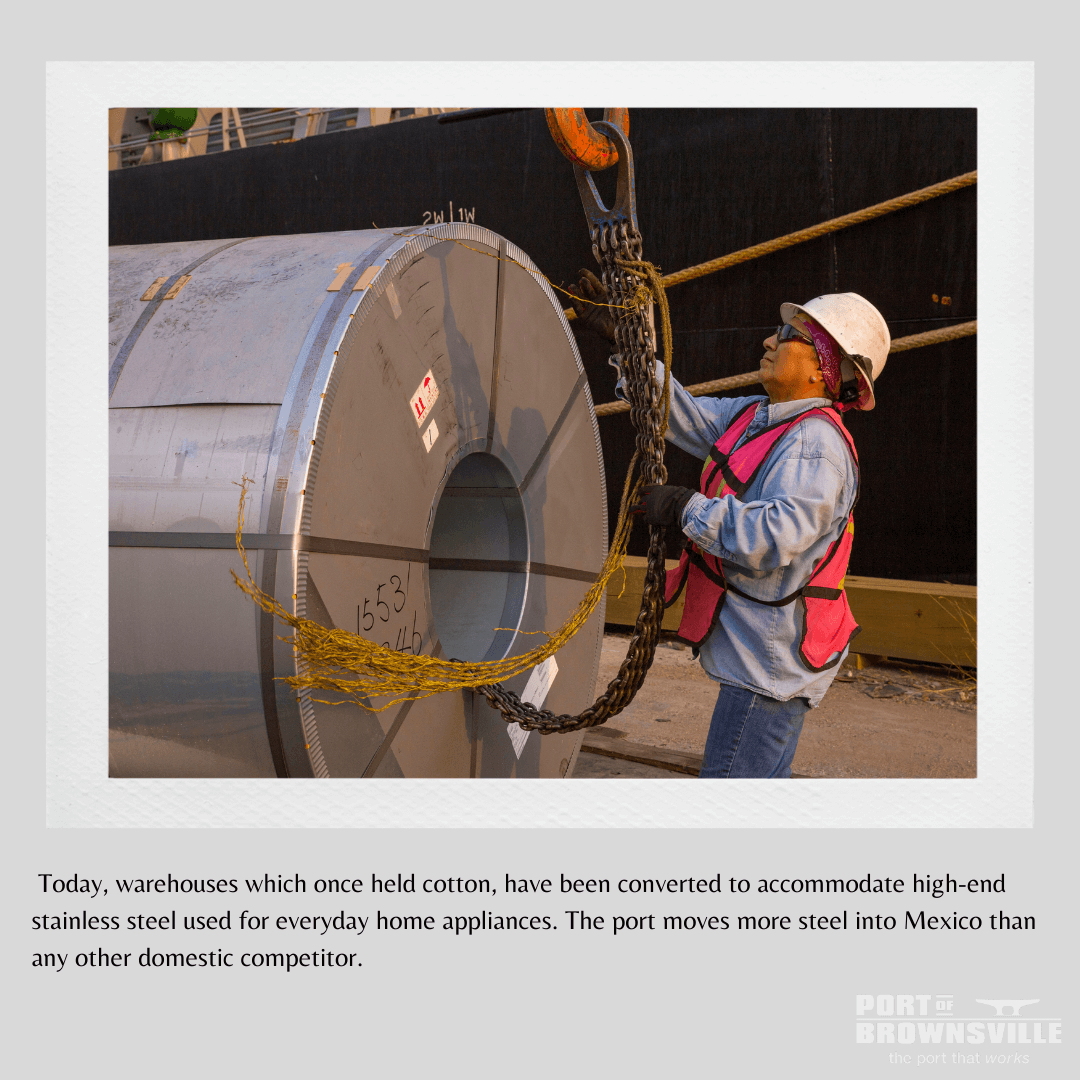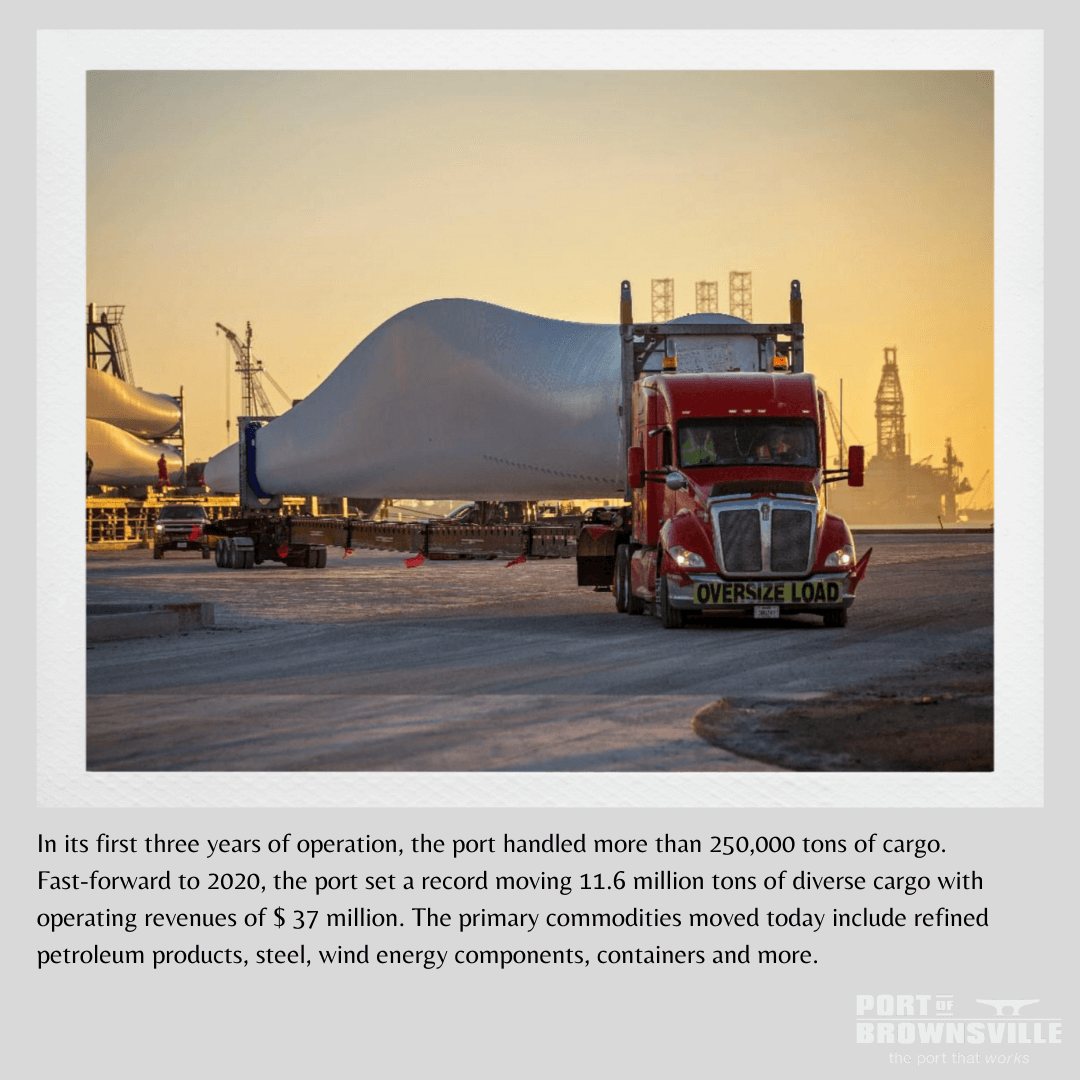Editor’s Note: This article is featured in the latest edition of the Port of Brownsville Directory
Arguably, the most valuable asset of any port is the depth of its channel.
The depth of a port’s channel can be compared to the length of an airport’s runway. The longer the runway, the bigger the planes. The deeper the channel, the bigger the ships.
For example, with just one more inch of draft – or depth – a ship can carry 770,000 additional bushels of wheat valued at more than $60,000.
The Port of Brownsville plans to deepen its channel from 42 feet to 52 feet – 10 feet deeper! With that much additional draft, the cost savings for shipping goods across the Earth’s oceans reach an economy of scale far greater that those of the one-inch example. Which also means, more jobs to handle more cargo at the Port of Brownsville.
The port’s current channel depth is 42 feet, ranking it among the Gulf of Mexico’s deepest ports. So why deepen an already deep channel?
Since 1914, most of the world’s leading seaports designed shipping channels to match the depth of the then new Panama Canal at 40 feet – the most important shortcut in ocean shipping. In recent years, ships have dramatically increased in length and draft, prompting a massive expansion of the Panama Canal that became operational in 2016.
The Panama Canal’s newest locks can accommodate ships drafting more than 50 feet and longer than four football fields. The canal expansion served as a catalyst, motivating U.S. East Coast and Gulf of Mexico ports to harmonize channel drafts with those in Panama to accommodate a flood of new shipping infrastructure challenges.
After years of effort, planning and success, the Port of Brownsville received channel deepening authorization in 2016 from the U.S. Congress. The project received authorization from the U.S. Army Corps of Engineers to begin construction, expected to be in 2020. Deepening the port’s channel means bigger ships, more cargo, and more jobs for the Rio Grande Valley.
However, the cost of channel deepening is expensive, very expensive. The port estimates the cost may be as much as $350 million. Creating an affordable financing strategy required the right mix of fiscal sensibilities and creative solutions. The answer was found in a public, private partnership, combined with eligible federal dollars and port funds.
NextDecade, owner of the proposed Rio Grande LNG natural gas liquefaction plant (largest of the proposed Port of Brownsville LNGs), adopted the P3 strategy as its own in a landmark agreement with the port in April 2019, agreeing to pay 100 percent of the deepening project from the western boundary of its lease site along the ship channel to its offshore origin (more than nine miles) – or more than half of the deepening project. Other proposed development projects are expected to join the P3, sharing in both the cost and benefit of a deeper channel.



